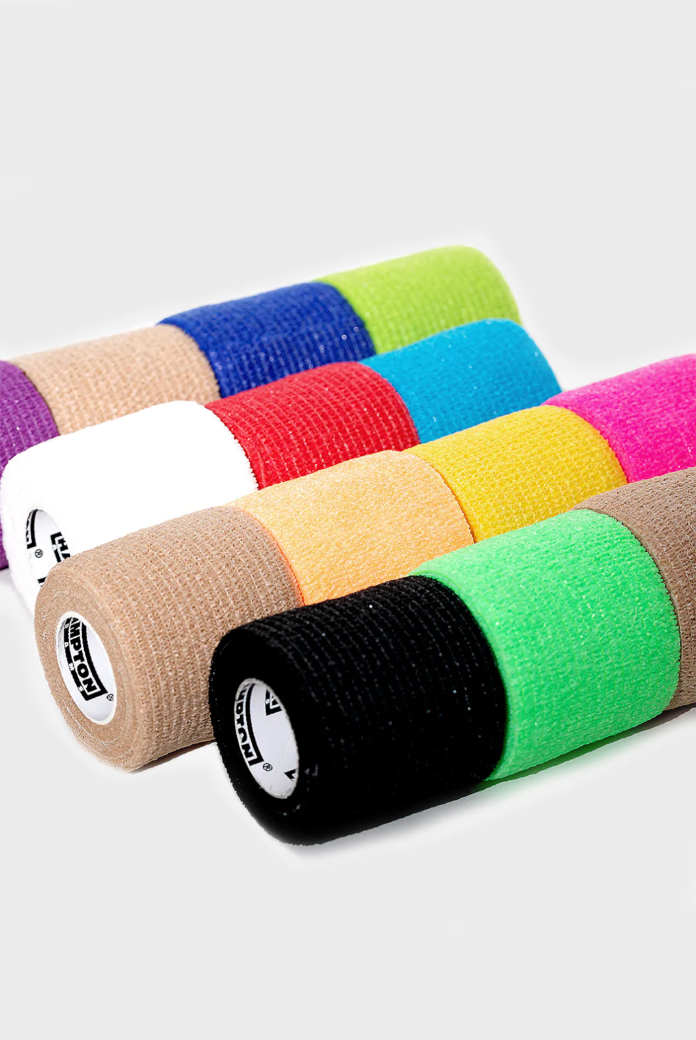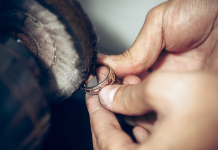What are adhesive bandages? What are they used for? How can you make them last longer? How can you get their adhesive off your skin? Read on to get answers to these and many more questions.
The adhesive tape here refers to the type that is commonly found in the hospital. It is also called surgical tape, Self Adhesive Athletic Tape, and medical tape. This tape can be used for different purposes depending on the type.
Adhesive tapes are named that way because of their ability to stick to other surfaces, unlike cohesive tapes that can only stick to themselves. Surgical tapes are mostly used in clinical areas like hospital rooms and ambulances; however, they are not restricted to these places.
Their most common functions include support, protection, stability, and anchorage, among others.
Types
1. Micropore Paper Tape
This type of adhesive tape is filled with tiny holes, but in a good way. This is why it has the name “microphone.” These holes are not without good use; they give the tape breathability, which can be essential for healing. Sometimes, all you need is some good filtered air on your skin. This may just be its greatest advantage over all the other four types of medical tape.
It is not the most adhering tape out there, but it’s sticky enough. This “just-about-enough” stickiness is not without its upsides. The chances of micropore tape leaving any substance on your skin are incredibly low because of this characteristic. It is also simple to remove compared to, say, transpore tape. This is why it is preferred for daily bandage changes.
Micropore paper tape is not waterproof, but it can withstand a little sweat. It is usually made of hypoallergenic materials – materials that contain little to no allergens (this varies from brand to brand).
2. Transpore Polyethylene Tape
This type of adhesive bandage contains holes just like micropore tapes; they may even be significantly more. This accounts for its breathability, which as you already know, helps with recovery. Of all the types of adhesive bandages, transpore tape is the most abundant type in the hospital. So, why do medical practitioners love it so much?
First is the breathability that we just mentioned. Next on this list is its strength, transpore tape is really strong. This is the kind of bandage that will stay with you; come rain, come sunshine. Tough may even be a more appropriate word to describe it. However, despite its strength, the tape is quite easy to tear.
This is why it is commonly found in ambulances; it can be easily torn for use in the case of emergencies.
In addition, transpore polyethylene has impressive adhesion. This is its upper hand over other bandage types. This tape can stick to almost anything, be it skin, hair, or plastic. It can stick to wet, sweaty, or bloody skin, which is another reason why it is fancied by the ambulance crew.
This stickiness comes with its downsides, like painful removal. Removing transpore tape may be the most painful thing you will ever go through; the glue is that strong. It is also the type of tape to leave sticky residue on your skin. It is not suitable for daily bandage changes.
It is not advisable for people with fragile skin; it may irritate or damage their skin. However, this adhesion comes in handy when you have to secure medical equipment to the skin.
Transpore tape can withstand a lot of moisture, and it is very resilient and durable. However, it is not very stretchy or flexible. It is best when strength and moisture are required but is not advisable in situations that require tenderness or flexibility.
3. Durable Cloth Tape
This type of surgical tape is best suited when flexibility and strength are both required. It is very breathable and comfortable; this is probably why it is called cloth tape.
Durable cloth tape is also quite heavy on flexibility. It is perfect for contours, sharp joints, and irregular body parts.
Like regular cloth, this tape can not withstand moisture, at least not too much of it. It is just about as sticky as micropore paper tape. Its removal is not painful, nor does it leave behind any sticky residue. This is why it is also good for daily bandage changes.
4. Zinc Oxide Tape
This type of Self Adhesive Medical Tape is preferred by athletes. Why? Because all they need is something that lets them move, keeps them comfortable, and of course, soaks up their buckets of sweat. This tape is the answer to all their prayers.
Zinc oxide tape is super flexible, comfortable, and absorbent. Athletes can move around easily in them without having to worry about it ripping. Moreover, it can serve as a form of protection from injuries.
5. Waterproof Tape
We can assume that this adhesive tape was made with swimmers in mind. It is exactly what its name suggests; it can withstand all the water you throw at it. Even if you are not a swimmer, as long as you know you will encounter a lot of moisture, this is the best option for you. However, make sure that your skin is not wet prior to the attachment of the tape; it is only waterproof from the outside.
This tape is not breathable like micropore or transpore tape. So, it is better for protection than it is for healing. It does not leave a sticky residue.
Uses
Adhesive tapes can be used for various things depending on the type. Strong surgical tapes like transpore polyethylene tape and durable cloth tape can be used for support and protection. They can be used to anchor pre-wrap, secure splints, and hold dressings in place. Transpore tape’s adhesion comes in handy when it comes to securing hospital equipment.
Micropore paper tape can be used to speed up healing and protect wounds, thanks to its breathability. It can be used as a post-surgery bandage, especially since frequent changes will be required. In addition, it will speed up the healing process of the surgical wound.
Zinc oxide tape can also be used for support and stability, which are aimed toward the prevention of injury.
Unlike our Hampton Adams Adhesive Bandage 2 inches by 3.3 yards of non-woven adhesive bandage, some adhesive tapes leave some glue behind on your skin. How can you get rid of the adhesive?
- Oil: Oil is a good home remedy for removing the remnant of bandage adhesive. You can just apply a few drops of cooking oil, like coconut oil or olive oil, to your skin and wait. You may also use a cotton ball to gently rub the oil. Do not apply excessive force, as this may end up causing more damage to your skin. Also, you do not need too much oil. You should wash off any excess oil with a clean moist towel. Baby oil is also a good option, especially for kids or people with delicate skin, as baby oils are made to be gentle.
- Nail Polish Remover: Using nail polish remover is another common way of removing adhesive. Most nail polish removers contain acetone which is a solvent for glues. Use this option with care, as acetone is flammable. You shouldn’t stand beside a stove while doing this. In addition, acetone may cause irritation or dry skin in itself. Apply a few drops of the liquid to your skin and rub it in gently.
- Alcohol: As you know, alcohol contains a bunch of chemicals, so avoid using too much of it. Use a cotton pad or ball to rub the alcohol into your skin. It should dissolve the adhesive in no time so you can clean it off.
- Petroleum Jerry: Vaseline, alongside other products that contain petroleum jelly, is effective in getting rid of adhesives. Because petroleum jelly is naturally good for the skin, this is one method you don’t have to fret about. You can apply some of it to your skin and leave it there for a while. Clean it off later and watch it reveal your adhesive-free skin.
- Warm Water: If you want to get rid of the adhesive on your skin while relaxing and having the time of your life, this is the perfect method for that. Fill up a bowl with warm water and soak the part of your body that needs cleansing. You can also decide to just take a shower or a bath. It should be, advisably, a long shower so that the adhesive can really soak in the warm water. You can also scrub the spot gently with a soft sponge or towel.
- Cold compress: This is just ice wrapped in something, possibly a paper towel. Place the ice on the affected spot and let it sit for a while. This should dissolve the adhesive and make it easier to remove.
We know that using only quality products on your skin is a priority for you. You can get flexible, no-sticky residue and strong adhesive bandages from us at Hampton Adams.

























